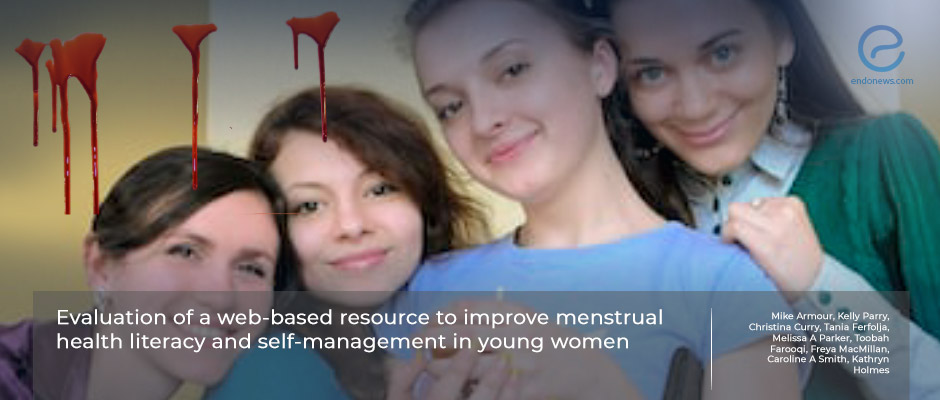Web-based resource to improve menstrual health awareness
Nov 15, 2022
Web resources provide information, and improve menstrual disorders in young women.
Key Points
Importance:
- Menstrual disorders such as heavy bleeding and dysmenorrhea are common in young women, but many are unaware of how their menstrual symptoms can be managed.
Highlights:
- Web-based menstrual health information may encourage health-seeking behavior and is acceptable and feasible for young people.
What's done here:
- An Australian research team aimed to determine whether access to a web-based resource is a feasible and acceptable method for managing menstrual disorders among young women.
- Over a 3-months recruitment period, 274 young women filled out the online version of the tool with Y/N responses, and 75 (aged 14-25) were found eligible for the 4-month study.
- Access to Period ImPact and Pain assessment (PIPPA) tool and self-management options were evaluated along three menstrual cycles.
Key Results:
- All 75 participants were currently living in Australia, menstruating for at least 12 months, and the majority were attending school or university.
- 85% reported that web-based resource was easy to use, and 90% were content about the provided information.
- 18 participants (24%) who were diagnosed with endometriosis had a median PIPPA score of 5, while other participants had a significantly lower score.
- There were no significant changes in the type and dosage of analgesics used between the baseline and the third menstrual period.
- There was no significant difference in the management strategies used at the study entry between those who were diagnosed with endometriosis and others except yoga and meditation.
- The overall use of self-management strategies for menstrual symptoms of participants increased from 65% to 86% at the end of the study.
- Participants reported that web-based resources were easy to use, provide helpful information, and increased awareness about menstruation disorders.
Lay Summary
Many women consider "menstrual pain" a normal part of being female, and do not seek medical help but rather use self-management methods such as heat, rest, and analgesics. They are often unsure which self-management strategies are effective or what the right choice is for analgesics and their doses.
Armour et al. from NCIM Health Research Institute, Western Sydney University, Australia aimed to increase health literacy through menstrual education using web-based tools and intended to explore whether access to these resources was feasible and acceptable. Among 274 young women participants who were determined to meet expected conditions by Period ImPact and Pain assessment (PIPPA) questions, 75 young women completed the 4-month study with three menstrual cycles using the web resource with a one-month follow-up.
Overall the participants rated the web-based resource as acceptable to use and the information relevant and helpful. More than half of them reported that the resource changed the way they managed their menstrual symptoms and 85% of them keep using at least one of the self-management practices they had learned.
The authors stated that access to a web-based resource is feasible with a minimal cost and easy setup and can increase awareness about menstrual health.
This interesting study was recently published in the Journal of Psychosomatic Research.
Research Source: https://pubmed.ncbi.nlm.nih.gov/36179421/
internet menstruation young women web-based self-management health literacy heavy bleeding dysmenorrhea endometriosis.

